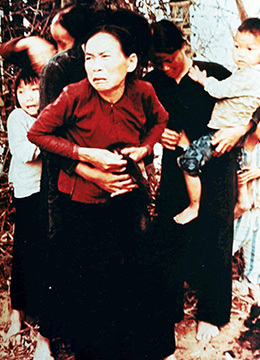| << Chapter < Page | Chapter >> Page > |
Many U.S. soldiers disapproved of the actions of their fellow troops. Indeed, a group of Vietnam veterans formed the organization Vietnam Veterans Against the War (VVAW). Small at first, it grew to perhaps as many as twenty thousand members. In April 1971, John Kerry, a former lieutenant in the U.S. Navy and a member of VVAW, testified before the U.S. Senate Committee on Foreign Relations about conditions in Vietnam based on his personal observations:
I would like to talk on behalf of all those veterans and say that several months ago in Detroit we had an investigation at which over 150 honorably discharged, and many very highly decorated, veterans testified to war crimes committed in Southeast Asia. These were not isolated incidents but crimes committed on a day-to-day basis with the full awareness of officers at all levels of command. . . . They relived the absolute horror of what this country, in a sense, made them do.
They told stories that at times they had personally raped, cut off ears, cut off heads . . . randomly shot at civilians, razed villages . . . and generally ravaged the countryside of South Vietnam in addition to the normal ravage of war and the normal and very particular ravaging which is done by the applied bombing power of this country. . . .
We could come back to this country, we could be quiet, we could hold our silence, we could not tell what went on in Vietnam, but we feel because of what threatens this country, not the reds [Communists], but the crimes which we are committing that threaten it, that we have to speak out.
—John Kerry, April 23, 1971
In what way did the actions of U.S. soldiers in Vietnam threaten the United States?
On March 16, 1968, men from the U.S. Army’s Twenty-Third Infantry Division committed one of the most notorious atrocities of the war. About one hundred soldiers commanded by Captain Ernest Medina were sent to destroy the village of My Lai, which was suspected of hiding Viet Cong fighters. Although there was later disagreement regarding the captain’s exact words, the platoon leaders believed the order to destroy the enemy included killing women and children. Having suffered twenty-eight casualties in the past three months, the men of Charlie Company were under severe stress and extremely apprehensive as they approached the village. Two platoons entered it, shooting randomly. A group of seventy to eighty unarmed people, including children and infants, were forced into an irrigation ditch by members of the First Platoon under the command of Lt. William L. Calley, Jr. Despite their proclamations of innocence, the villagers were shot ( [link] ). Houses were set on fire, and as the inhabitants tried to flee, they were killed with rifles, machine guns, and grenades. The U.S. troops were never fired upon, and one soldier later testified that he did not see any man who looked like a Viet Cong fighter.


Notification Switch
Would you like to follow the 'U.s. history' conversation and receive update notifications?